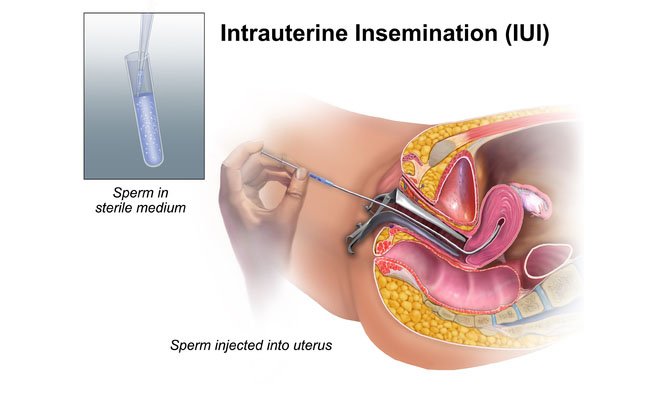Intrauterine Insemination (IUI) is a type of artificial insemination that allows physicians to inject sperm directly into a patient’s uterine cavity during an optimal time of ovulation.

A typical IUI cycle includes
Fertility Health Consult
You and your partner (if applicable) will meet with your physician for testing and a personalized discussion of your fertility health and family planning goals. Together, you will decide if intrauterine insemination is the right choice for you and create a personalized treatment plan.
Stimulate Egg Growth
Patients will be prescribed oral or subcutaneous injectable medications to stimulate the growth and maturation of their eggs.
Ultrasound & Blood Monitoring
During an IUI cycle, patients using no medication or oral medication can expect to have ultrasound and lab work appointments about 2-5 times during their cycle (including the IUI appointment). Patients who are using injectable medications along with IUI will have ultrasound and lab work appointments every 2-3 days to monitor the ovaries and egg development and to assess hormone levels. Through this testing and monitoring, we ensure everything is progressing safely.
Ovulation Induced
Once a “ripe” egg is present, a patient will self-administer a trigger shot that causes ovulation within about 36 hours. The partner (if applicable) provides a sperm sample or a donor sperm sample is thawed, then processed by the laboratory. During preparation, the sperm sample is “washed” to remove debris, immobile sperm and substances in semen that could cause severe cramping. The sperm cells are highly concentrated into a small volume.
Insemination Procedure
Just like a routine pelvic exam, the patient will lie on an exam table. The sperm sample is injected into the uterus through a thin, long, flexible catheter. The entire process is virtually painless and takes seconds to complete.
IUI success rates can reach as high as 20% per cycle depending on the patients age, diagnosis and treatment plan
Patients who may benefit from IUI include:
- Unexplained infertility
- Patients using donor sperm
- Endometriosis-related infertility
- Mild male factor infertility (subfertility)
- Cervical factor infertility
- Ovulatory factor infertility
- Semen allergy